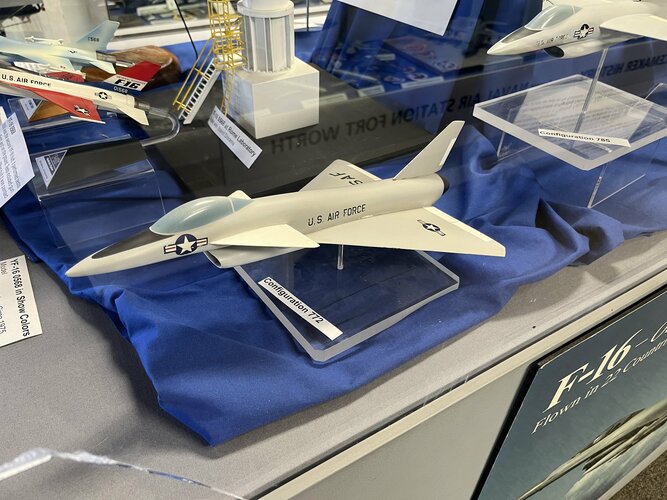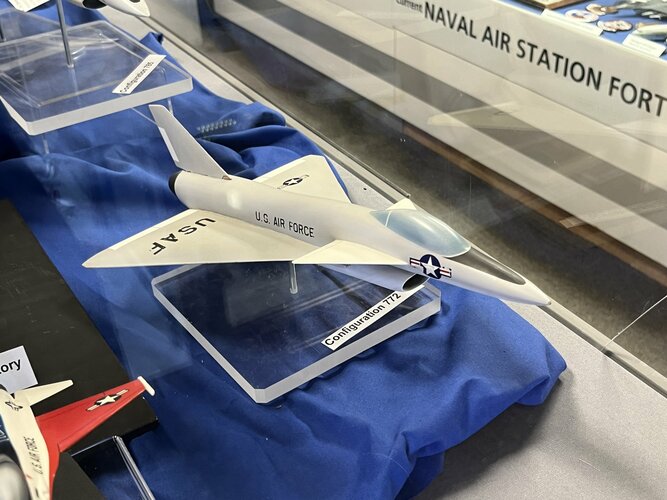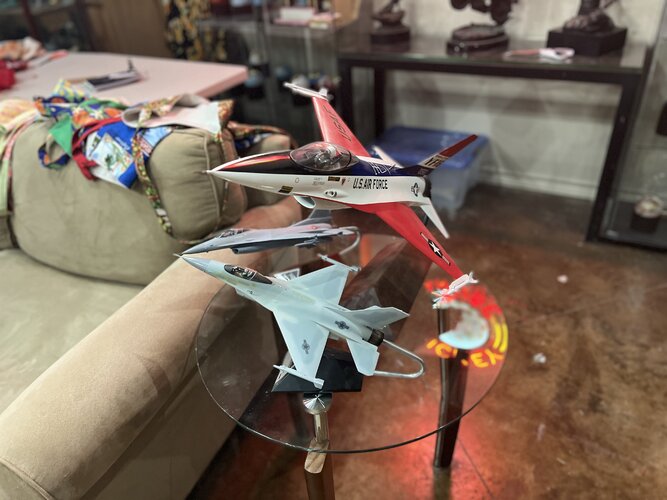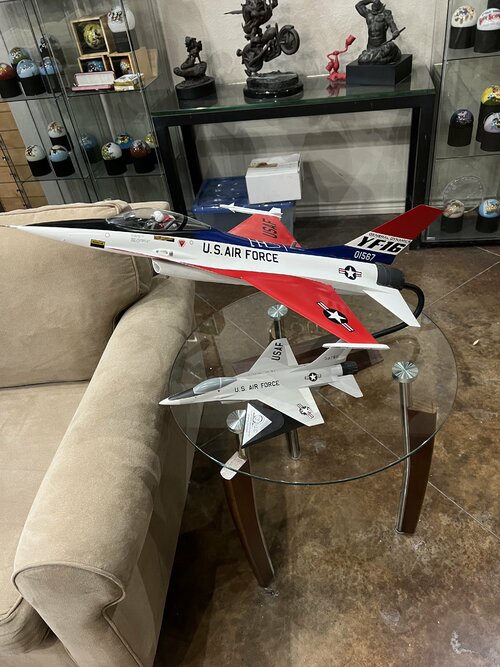- Joined
- 27 December 2005
- Messages
- 17,512
- Reaction score
- 24,714
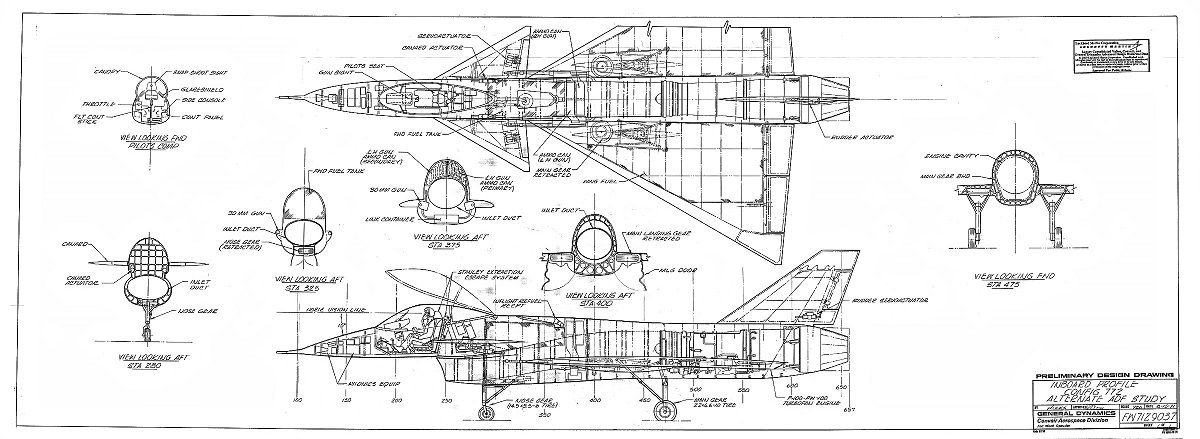
Configuration 772 Alternate ADF based on Convair San Diego canard delta work
Right / front to rear / left : Configuration 201C was perhaps smaller, YJ101 powered?. Confiiguration 401F-16 was almost the final YF-17. Configuration 401F-5 lost the rear chines for the tailplanes, then we see the rear of the 401A - the initial 401 versions were shorter and kind of dumpy.
This is Configuration 785, part of the 780 series of baseline conventional designs, and then what looks like the actual final YF-16 layout from the LERX shape.
Last edited:

